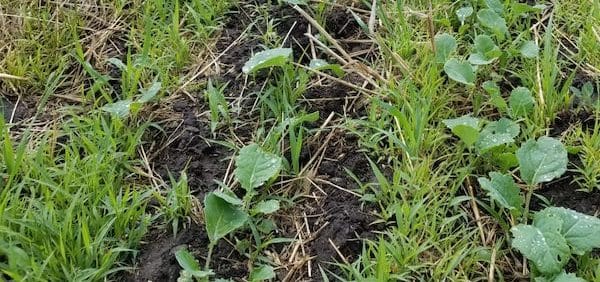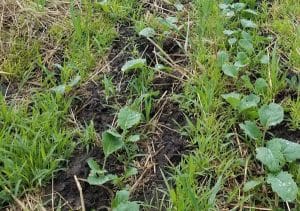A second application of in-crop herbicide is not always economical if the crop is well established, competitive and ahead of the remaining weed population.
A second in-crop spray only makes sense if…
…Crop growth is stagey and a large percentage of crop seeds are emerging later, a second application may be required to remove late-flush competition for these later seedlings. With improved moisture, these later-emerging crop plants may be able to close the gap with the first-emerging crop plants — but they will need the weed competition removed.
…Growers use canola as a clean-up crop for narrow-leaved hawk’s beard, round-leaved mallow, Group-1 resistant wild oats and other tough weeds, a second herbicide application may be required. Tank mixing with clopyralid (Lontrel) can help with certain perennials, but you can’t tank mix clopyralid with Liberty.
…Weeds are plentiful, at the same stage or ahead of the crop and the canopy hasn’t closed. These weeds may have a large yield impact. This could be a common situation when dry conditions have hampered crop growth. Note however that you’re still required to follow label rate directions for the sake of canola tolerance even if these large weeds might require a higher rate for control. New rate options for Liberty in Liberty-Link canola and the spray window and rate increases for TruFlex trait for Roundup Ready canola expand the second-application options for some canola crops.
…Weeds are at levels too low to influence yield, but are potential grade impacting weeds — such as cleavers — a second spray may pay off if it can do a job on these weeds. Note, quinclorac can be used in canola to enhance cleavers control in some situations.
Further considerations:
Herbicide-resistant weeds are becoming a bigger challenge every year as the area taken up by resistant weeds continues to expand and new forms/types of resistance (weed species, herbicide groups) are discovered. Scout for suspect patches that should have been controlled but were not. Higher plant populations and narrow row spacing are two effective cultural practices that provide an alternative to herbicide or, at a minimum, reduce the need for multiple in-crop sprays. Also band instead of broadcast fertilizer. Broadcasted fertilizer benefits the weeds as much as the crop, whereas banding fertilizer close to the seed row is targeted more to the crop.
For perennial weeds that have escaped but are delayed relative to the crop, growers may consider pre- or post-harvest glyphosate application as an alternative, especially if the weeds are delayed enough to avoid seed set prior to swathing.
Another option, if you still haven’t made the first pass, is to use a higher registered rate the first time around.
When to make the second pass?
It has to be applied before the window closes for each product, and if the crop is advancing slowly and smaller amounts of large perennial and winter annual weeds are interspersed with a large (post rain) flush of annual weeds growing fast between the rows, a second application sooner rather than later is probably a good economic strategy. This will get the bigger perennials while it’s still possible to control them and it will remove this latest flush that will provide the most competition to the crop.

